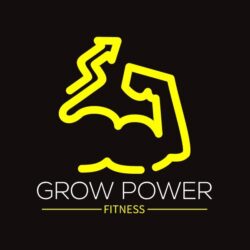Have you ever pondered how to successfully build up your upper body strength and chest muscles? You only need to consider the chest press exercise. The various facets of the chest press will be covered in this article, including its advantages, multiple varieties, proper form and technique, variations, safety advice, typical errors to avoid, and much more. So take a seat, and let’s get started!
Initialization
The pectoralis major and minor, which are the main target of the chest press, are two common resistance training exercises. It includes imitating the motion of moving large objects by pushing a weight away from your body. You can enjoy a variety of advantages from adding chest press to your exercise regimen that go beyond simply developing a well-defined chest.
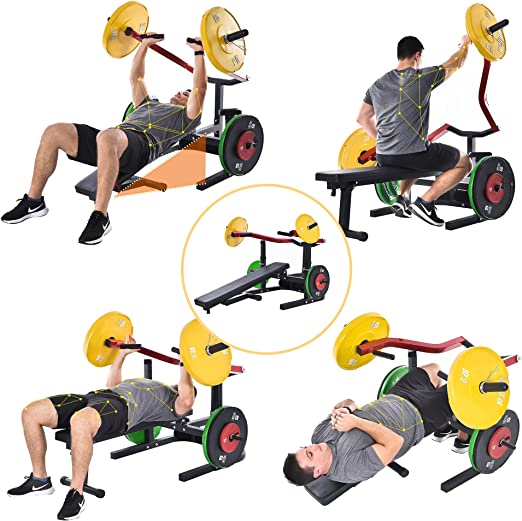
Merax Fitness Chest Press Bench, Adjustable Flat Incline Bench Press with Independent Converging Arms, Total 2000 LB Max. Load Chest Press Machine
Advantages of Chest Press
For people of all fitness levels, the chest press has many advantages. Let’s examine a few of these advantages:
Builds Chest Muscles
The capacity of the chest press to build the chest muscles is one of its key benefits. The pectoralis major and minor are engaged during the workout, which increases muscular activation and growth. Strong chest muscles are essential for everyday activities like pushing, pulling, and lifting in addition to helping to create a physically appealing physique.
Strengthens the upper body
Chest press exercises work the shoulders, triceps, core, and other upper-body muscles in addition to the muscles that are targeted in the chest. The strength and functional fitness of the upper body as a whole are enhanced by this complex action.
Enhances Posture
To maintain proper posture, one needs a strong, balanced upper body, particularly the chest muscles. Exercises like the chest press can help correct muscular imbalances and encourage good alignment, which can eventually improve your posture.
Various Chest Press Techniques
The chest press exercise has a number of versions, each of which targets the chest muscles slightly differently. Here are three typical examples:
The barbell press
A barbell with weights on it is used to do the barbell chest press. It entails lying on a bench and simultaneously pushing the barbell away from your chest with both arms. This exercise works your entire chest and enables you to lift heavier weights.
Chest Press With Dumbbells
In the dumbbell chest press, two dumbbells are used in place of a barbell. Greater mobility and the ability for each arm to function independently are provided, which may assist resolve muscle imbalances. Additionally, the stabilizer muscles are used more actively in this variant.
Chest press machine
A chest press machine that is frequently seen in gyms is used to do the machine chest press. It offers a directed route of motion and frequently has a variable resistance. Because it offers stability and lowers the possibility of poor form, this variation is appropriate for novices or people who are healing from injuries.
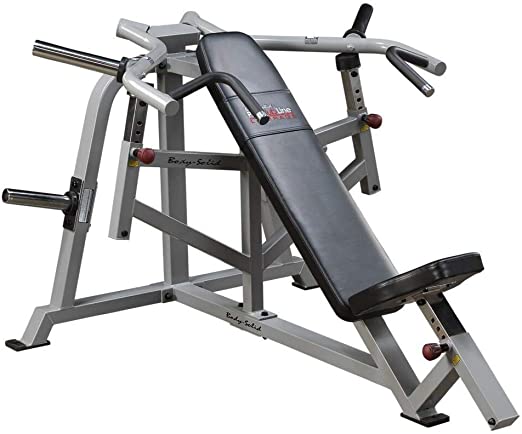
Body-Solid Leverage Incline Press
Correct Technique and Form
To get the most out of the chest press workout and avoid injuries, it’s essential to maintain appropriate form and technique throughout. To remember, have the following in mind:
Body Alignment
Place your feet firmly on the ground and lay flat on a bench. Throughout the exercise, make sure your head, shoulders, and back are in contact with the bench. This stance offers a solid foundation and encourages correct alignment.
Hand placement and Grip
Select a grip width that is cozy for you. A wider hold typically focuses the inside chest, whereas a narrower grip emphasizes the outer chest muscles. With a firm grip, hold the weights (barbell or dumbbells) and place them shoulder-width apart just above your chest.
Breathing Exercises
Take a deep breath in as you bring the weights closer to your chest. As you move the weights away from your body, fiercely exhale. This breathing pattern supports core stability and gives working muscles the oxygen they require.
Different Chest Press
You can include many variants to change up your chest press practice and make it more difficult. These are the top three:
Incline Chest Press
The upper chest muscles are more specifically targeted by the incline chest press. It is carried out on a bench that is slanted at a 30 to 45 degree inclination. The clavicular head of the pectoralis major is highlighted more by the angle.
Decline Chest Press
The decline chest press, on the other hand, concentrates on the lower chest muscles. It is carried out with the head lower than the hips while lying on a decline bench. The sternal head of the pectoralis major is engaged by this variation.
Chest Press with Close-Grip
During a close-grip chest press, you close the distance between your hands and the barbell or dumbbells. This variation puts more emphasis on the triceps and inner chest muscles, giving your workout a different sensation.
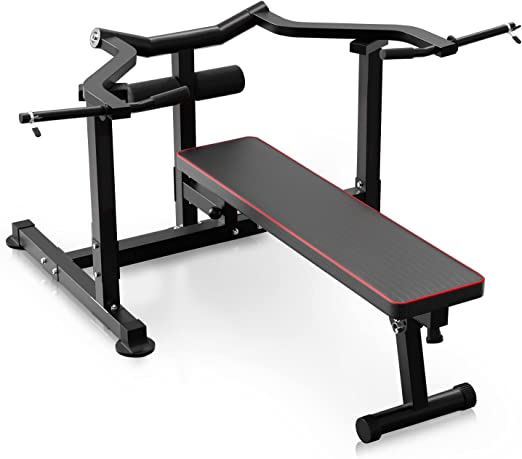
Wesfital Bench Press Set, Chest Press Machine with Independent Converging Arms, Adjustable Flat Incline Bench Press with Dumbbell Rack for Chest, Arm and AB Workouts Home Gym Equipment
Including Chest Press in Your Exercise Program
Now that you are aware of the various types and variations of the chest press, let’s talk about how to properly include it in your exercise program. The following elements need to be taken into account:
Repetitions and Sets
Aim for three to four sets of eight to twelve repetitions in order to increase strength and muscle. To make each set more difficult for you while keeping good technique, adjust the weight.
Training Frequency
It is normally advised to train each muscle group, including the chest, two to three times each week to allow for adequate recovery. However, pay attention to your body and modify your workout frequency based on your unique requirements and capacity for recuperation.
Safety Advice
The following safety advice should be kept in mind to guarantee a secure and efficient chest press workout:
Start with lesser weights: If you’ve never done a chest press before or you’ve had a hiatus, start with lighter weights to learn good form before stepping up the resistance.
Warm-up and cool-down: Before beginning your chest press exercise, always warm up your body with dynamic stretches and light cardio. Similarly, to encourage muscular healing and flexibility during your cool-down, perform static stretches.
Observe your body: While performing the exercise, pay attention to any discomfort or pain. Stop exercising and seek medical attention or advice from a fitness expert if you feel any sudden or lingering pain.
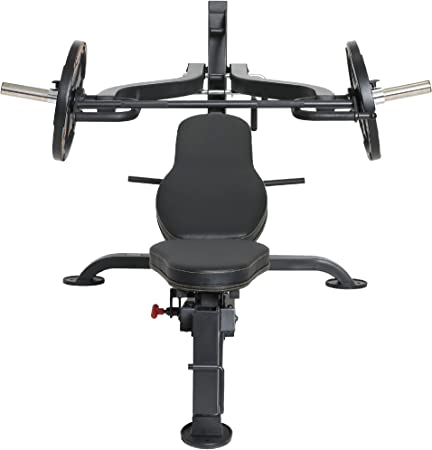
Powertec Fitness Workbench Multi Press – Adjustable Gym Equipment for Home – Multifunctional Bench Press – Universal Exercise Equipment for Strength Training
Common Errors to Prevent
Avoid the following frequent mistakes to maximize your chest press exercises and reduce the chance of injury:
Maintain a neutral spine throughout the workout to prevent your back from arching. Avoid allowing your lower back to arch or sag excessively, as this can put strain on your spine and lessen the efficacy of your chest press.
Utilizing momentum: Pay close attention to regulated motions during the lifting and lowering stages. As momentum inhibits the activation of the target muscles, avoid using it to swing the weights.
ignoring appropriate form: Poor form can result in inefficient outcomes and raise the possibility of harm. For the best results when performing the chest press, take the time to learn and practice the proper technique.
Warnings and Interdictions
Although the chest press is a useful workout, not everyone may benefit from it. Take into account the following warnings and restrictions:
Shoulder or wrist injuries: Before completing chest press workouts, those with shoulder or wrist ailments should get medical advice. To avoid future discomfort or injury, adjustments or substitute workouts may be advised.
Pre-existing medical ailments: Before adding chest press to your exercise regimen, speak with your doctor if you have any pre-existing medical conditions or concerns, such as heart conditions, high blood pressure, or joint issues.
Muscle imbalances and chest presses
Posture and general strength can be impacted by muscle imbalances, which occur when certain muscles are stronger or more contracted than others. The following imbalances can be remedied by including chest press exercises:
Muscle imbalances can be addressed by performing chest press exercises with perfect technique and balancing them with exercises that target opposing muscle groups. This will help balance out the chest, back, and shoulder muscles.
Cross-training can help with balanced muscular development and overall strength by including a variety of workouts that focus on various muscle groups. Along with chest press, you might want to include back, shoulder, and core movements to your workout program.
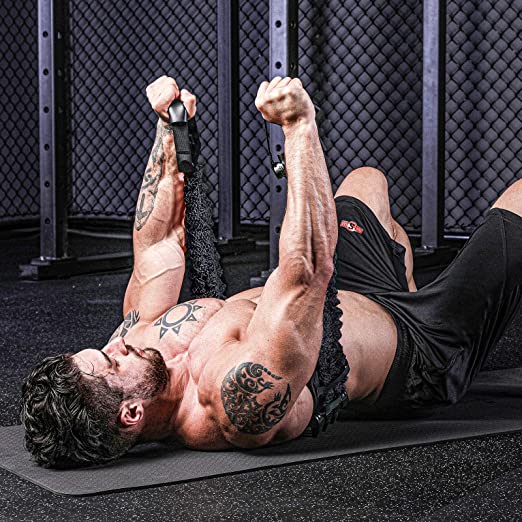
INNSTAR Portable Bench Press, Adjustable Push Up Resistance Bands, Chest Builder Workout Equipment, Arm Expander Resistance Training for Home Workout, Gym, Fitness,Travel Training-Patented Product
Development and Overload
Apply the principles of progression and overload to your chest press routines to keep moving forward and testing your muscles:
Gradually increasing the weight you lift when performing chest press exercises: As you get stronger, gradually increase the weight you lift. This gradual overload promotes strength and muscular increases.
The progressive overload theory states that you may ensure continuous improvement and avoid plateaus by regularly testing your muscles by increasing resistance, adjusting repetitions, or changing variants.
Women’s Chest Press
There is a widespread misunderstanding that only men should perform chest press exercises. Women, however, can considerably benefit from integrating chest press in their exercise regimens:
Putting myths to rest: Doing chest presses won’t make women seem obese or make their breasts smaller. In fact, they can aid in chest muscle toning and lifting, which helps the upper body become more sculpted and defined.
Benefits for women: Chest press exercises help women have stronger upper bodies, better posture, and more balanced body types. They can improve physical fitness and athletic performance in a variety of daily activities.
FAQs
Here are a few chest press-related questions that people regularly ask:
What weight is suggested for beginners?
The ideal weight for beginners varies according to each person’s degree of fitness and strength. Starting with a weight that enables appropriate form and technique is advised, with an emphasis on muscular activation rather than intense resistance. As you get more comfortable and confident with the activity, gradually increase the weight.
Does chest pressing affect breast size?
No, performing chest presses does not directly target or diminish the size of the breasts. Genetics, body fat distribution, and hormonal influences are the main determinants of breast size. However, consistent chest press exercises can assist tonify and develop the muscles of the chest, offering support and improving the chest area’s overall appearance.
Do chest presses improve posture?
Yes, chest press exercises can help you stand up straighter. The chest press assists in balancing the effects of forward head posture and rounded shoulders by enhancing the chest muscles, notably the pectoralis major and minor. Strengthening the chest muscles can help to improve posture and alignment by helping to open up the chest and bring the shoulders back.
Is the chest press appropriate for all levels of fitness?
Exercises for the chest press can be changed to match different levels of fitness. Beginners should start with lesser weights or modified variations of the exercise, including doing a chest press on an inclined bench or with resistance bands. Individuals can move to utilizing barbells or heavier dumbbells as their strength and proficiency grow. To prevent damage, it’s critical to pay attention to your body, utilize good technique, and gradually increase intensity.
How frequently should I add chest presses to my exercise regimen?
The quantity of chest press exercises you include in your workout depends on your entire training program and goals. Aim to work the chest muscles 1 to 2 times per week as a general rule, with ample time between workouts for rest and recovery. To gain general balance and strength, it is imperative to have a well-rounded workout regimen that includes workouts that target other muscle groups as well.
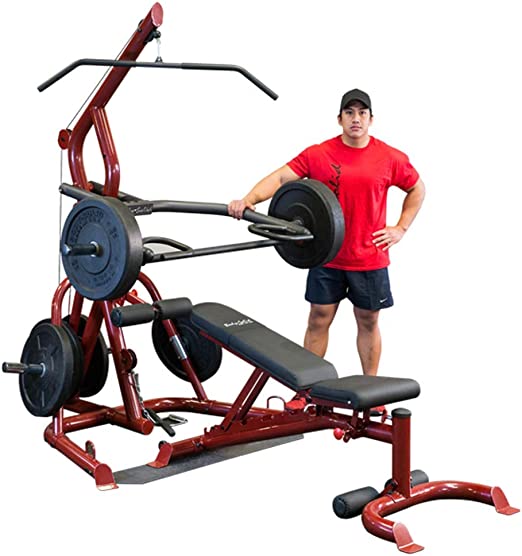
Body-Solid GLGS100P4 Corner Leverage Gym Package with GFID100 Bench
In summary
Any upper body fitness program would benefit from include the chest press exercise. You may improve posture, strengthen your upper body, and strengthen your chest by doing chest press exercises. To properly challenge your muscles, prioritize excellent form and technique, select appropriate variations, and proceed slowly. The chest press can assist you in reaching your strength and fitness objectives, regardless of your level of experience as a fitness enthusiast.
